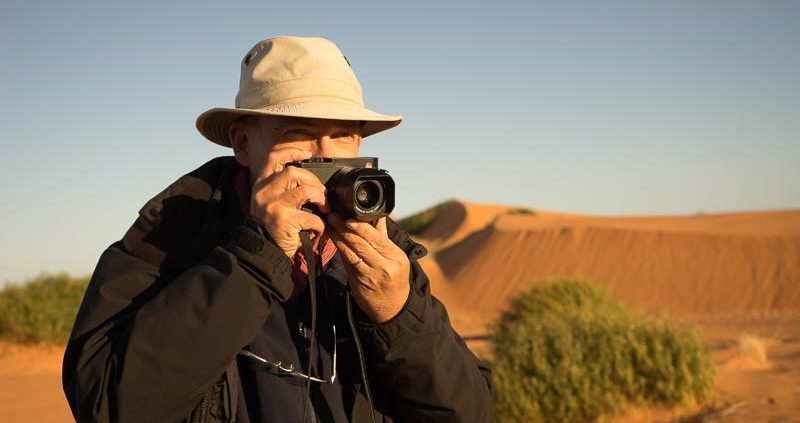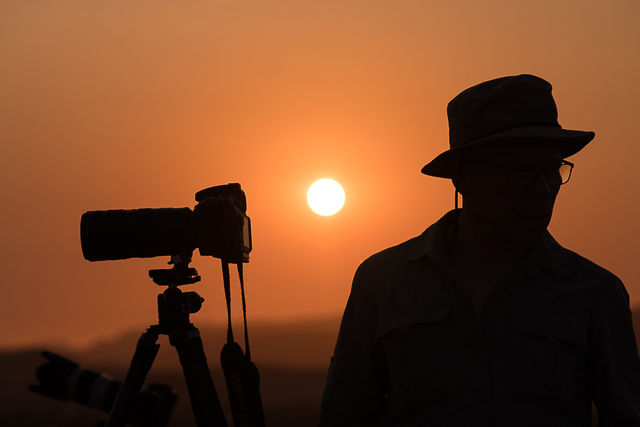Photo Basics – Apertures

Wide apertures like f1.4 limit the focus to only the eyes – Banda Neira, M-Monochrom. 50mm Summilux.
The aperture is a crucial component of photographic lenses. It’s an adjustable iris mechanism that can be a narrow hole or as wide as the inside of the lens allows. Why is it important? Well, if shutter speeds determine the length of time light shines on a camera’s sensor then the aperture controls the intensity or brightness of that light. Think of it like a pipe. A narrow pipe can only let so much water through in a given amount of time whilst a wider pipe can let through more.
Your eye has an iris, and it will be small on a bright day and wide when the light levels are low. This is exactly how a camera’s aperture works – the aperture controls the intensity of light entering the camera. This is very important for two reasons: Exposure and Depth-of-Field.
Read on for more, and if you find this interesting consider joining me on one of my Leica Akademie workshops – Photo Fundamentals – where I take you through ten different core subjects including Apertures, Shutter Speeds and ISO.

Landscape shots like this use narrow apertures like f11 so the image is sharp throughout. Leica S, 35mm
To achieve a ‘correct’ exposure the aperture acts as a counterpoint to the shutter speed. The camera needs a specific amount of light falling on the sensor to optimally capture all of the tones in a scene.
Exposure Control
On a sunny day outdoors there is a given amount of light falling on the subject; this is not something you can control, but you can control how much light falls on the sensor and for how long by setting different combinations of aperture and shutter speeds. If an aperture of f16 and a shutter speed of 1/60 sec results in a correct exposure then an aperture of f4 and a shutter speed of 1/1000 sec will result in the same correct exposure. Both have been changed by 4 setting steps (known as stops), but in opposite directions.
F16 @ 1/60 , f8 @ 1/250 and f4 @ 1/1000 all result in the same exposure.
One of the hardest things to get your head around is the terminology; a small aperture is actually a large number and vice versa. Thus f16 is a small aperture physically whilst f2.0 is a large aperture. So, when someone says that they used a small aperture they might mean f16, and a large aperture might mean f2.8. The other confusing aspect is that each single stop represents a doubling or halving of the light intensity even though the number only changes by a multiple of 1.4. Thus f4.0 lets in half the light that f2.8 does.
Depth-of-Field Control
Changing apertures also alters the amount of focus ‘depth’ in the image.
As the iris gets smaller (bigger f-number) more of the subject appears to be in focus. Imagine taking a simple portrait where the face fills the frame using a modest telephoto lens like an 85mm or a 100mm. If you focus on the eyes – at f2.8 the eyes will be sharp but the tip of the nose and the ears will be out of focus. Using f16 instead will bring the nose and ears into focus – more depth-of- field – but at the same time the background will be more distracting because it will be sharper.
This aspect of different apertures can be used to creative effect, particularly in what’s known as ‘selective depth-of-field’. This is a method used to concentrate the viewer’s attention on the subject by making sure any background is so out of focus that it ceases to be distracting and makes the subject stand out in an almost 3D manner.
Selective Focus
Flowers are good subjects for selective DOF – these images show the difference between wide open at f2.0 and stopped right down at f22. Out of focus regions have their own character too – it’s hard to believe but there are actually different kinds of blur! The term ‘bokeh’ is used to describe the way out of focus areas appear in images. This does vary depending on the lens design and number of leaves in the aperture mechanism. The more leaves in the iris the more close to a circle the iris hole is and this affects the smooth shapes of the out of focus parts of the picture.
The more expensive lenses have more iris leaves and are considered to have superior ‘bokeh’ but this is not a hard and fast rule. Zeiss and Leica lenses are often bought specifically for their fine bokeh in portraiture but many of the better Canon and Nikon lenses have similar looks – in particular the Canon EF85f1.2L and the Nikon 85mm f1.4D are considered good performers.
At the widest apertures, especially wide open, bokeh varies less between lenses because the iris is fully open and is thus a close approximation to a circle, ugly bokeh rears its head when the aperture is closed down and out of focus highlights take on the shape of the iris itself.

Selective focus draws the viewers attention. Leica M9, 75mm Summarit.
Landscapes
At the other end of the depth of field range is landscape photography where we often want everything in focus and using small apertures (f16) is often a good idea. In the opening image of desert dunes the foreground is only about 1m from the lens but everything is kept sharp right to the horizon by using a small aperture.
However, the deep DOF generated by small apertures has its own characteristics, or more accurately, serious drawbacks. Light passing through small holes gets scattered ever so slightly. Scattered light cannot project a sharp image which will consequently look slightly soft. At the smallest apertures, like F22, this scattering, or diffraction as it is called, becomes more than merely slight, it produces a visibly softened image.
This is known as a Diffraction Limit and as its name suggests, limits the amount of detail that a lens and sensor combination can record. This is an advanced subject but is directly related to apertures so is worth mentioning here – in a nutshell, if you use small apertures to get maximum depth of field you will have to trade this off against a softer image. There is no such thing as a free lunch it seems!
Apertures are a fundamental part of the capture process. Almost all cameras need lenses and all lenses have some sort of aperture through which the light is passed. As we have seen, apertures have a great influence on how the image looks and a full understanding of this, and the way they interact with shutter speeds, will help you craft fine images and get more satisfaction from your photography.








